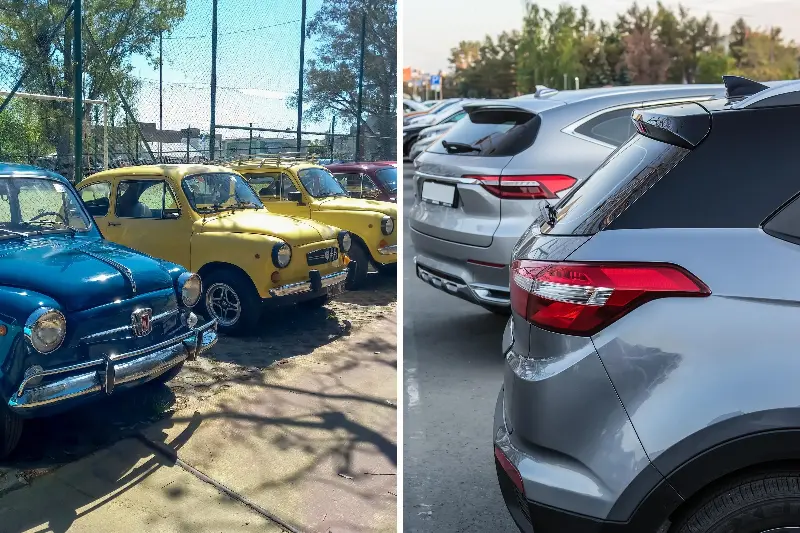
From luxury branding to tech gadgets, real estate staging to wardrobe choices, one trend has quietly swept across industries and continents: a growing allegiance to neutral, desaturated tones.
Gray, beige, white and black have become the dominant language of marketing and design, replacing the warm-toned and saturated reds, greens, and blues of decades past. Marketing and behavioral researchers told Newsweek that this shift is not simply aesthetic—it is psychological, cultural, and deeply revealing about modern life.
"In times of uncertainty, including economic upheaval, climate anxiety and digital overload, neutrals offer a sense of calm and control," Gomathy Lakshminarayanan, a behavior researcher with two decades of experience at firms like Kantar and Aditya Birla, told Newsweek. "They act as visual white noise, creating psychological safety and simplifying our surroundings."
The widespread move toward color neutrality—particularly gray—reflects more than changing tastes. It is, according to Lakshminarayanan, a barometer of our collective anxiety and a mirror of our curated, digital-first identities.
Minimalist aesthetics, once the domain of high-end branding, are now inescapable across consumer products and interior design, signaling aspiration, safety and order in a chaotic world.
This cultural change came into sharp focus through a viral post by Instagram user @das.archivee, which compared the bright, diverse palettes of past decades in cars, homes, fashion, and films to today's monochromatic and cool-toned visuals.
Captioning the post was a reference to a 2020 study that analyzed over 7,000 items in the U.K.'s Science Museum, revealing a steady desaturation of colors in consumer goods since the 1800s. The decline accelerated in the 20th century, as mass manufacturing favored uniformity and cost-efficiency.
"In 2020, gray was the most common color across newly released consumer products," the post noted, highlighting the widespread dominance of neutral tones in modern life.
The creator told Newsweek: "I curated the post, but it consists of images that I do not personally own."
Lakshminarayanan said she views this change not as a loss of creativity, but a reflection of psychological adaptation.
"There's an aspirational element driving this trend," she said. "Minimalist palettes have become associated with luxury, refinement and timelessness, which are all qualities that people are drawn to in an era defined by rapid change."
Memory in Monochrome
Brendán Murphy, global creative director at Lippincott—the firm behind design mainstays like the Coca-Cola ribbon and the Starbucks logo—told Newsweek that today's color conservatism marks a stark departure from the vibrant self-expression of the past.
"Fast forward to today, and the interior-design world is dominated by beige natural fibers, off-white walls, stainless steel appliances, and glass food containers," Murphy said. "It used to be that in a world dominated by the middle and working class, color compensated for the lack of other belongings."
Murphy links this retreat from color to economic signaling and mass consumerism. As premium brands embraced minimalist branding to convey sophistication, budget brands followed suit to emulate that aspirational image.
"What began as a differentiator has led to the blandification of our physical goods en masse," Murphy said.
Color, according to the creative director, once provided functionality and expression.
"Color also served a function, combined with pattern and texture, color in wallpaper and carpet helped hide many sins from rising damp to irregular floors and walls," he said.
Now, in what Murphy dubs "the Crate and Barrel effect," products are designed for quick turnover, curated to be shared on social media and replaced with the season's latest tones.
"Whereas individual self-expression once made you unique, we are inherently tribal and we gear toward conformity," he said.
Lakshminarayanan echoed the idea that neutrality has become a shared cultural shorthand.
"Social media has amplified the pressure to present curated, inoffensive identities," she said. "Neutral aesthetics are a safe, sophisticated language that avoids risk and allows for wide appeal without polarizing."
While physical spaces have grown quieter in color, Murphy said our digital lives have absorbed the ejected vibrancy.
"It seems all the color has drained from our physical environs and concentrated in the virtual world," he added. "Our fantasy world is not lived out with posters on our bedroom walls but in social-media posts, chats, and likes."
This divergence between digital and physical spaces may reflect the broader duality of modern existence: overstimulation online; and a craving for simplicity and quiet offline.
"Rather than losing our love for color," Lakshminarayanan said, "we've redefined what stability, taste and status look like in our environments."
